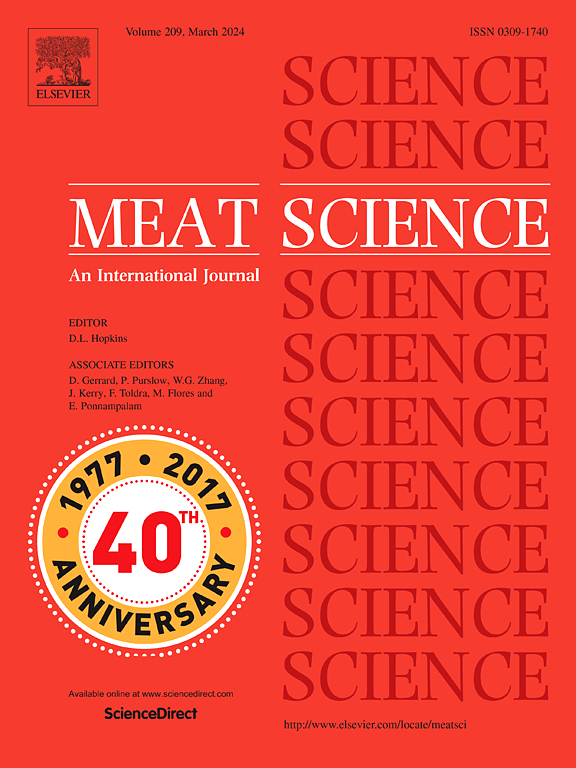评估屠宰场的猪只福利:对适合纳入监测协议的动物指标进行系统审查
IF 6.1
1区 农林科学
Q1 Agricultural and Biological Sciences
引用次数: 0
摘要
猪的福利是猪肉行业可持续发展的战略支柱。因此,有必要确定、开发和/或验证商业条件下的猪福利评估指标。按照 PRISMA 指南进行的系统性综述确定了 95 项猪福利指标(PWIs),分为生理、行为、健康和死后以及产品质量。审查评估了这些指标在屠宰场用于衡量运输和屠宰期间福利的有效性和可行性(V&F)。研究发现了 30 个 V&F 指标:1 个生理指标(体温)、12 个行为指标(人兽关系、攻击、跌倒、发声、滑倒、喘气、躺下、坐下、回头)、13 个健康和死后指标(是否有入口、疝气、身体病变、耳部病变、尾部病变、心包炎、肺炎、滑囊炎、跛足、死亡动物、行走和不行走动物)以及 4 个产品质量指标(pH 值、瘀伤、身体状况、胴体重量)。这些信息可能有助于确定影响特定猪只福利问题风险水平的因素,从而有助于应用基于风险的策略。本文章由计算机程序翻译,如有差异,请以英文原文为准。
Assessment of pig welfare at slaughterhouse level: A systematic review of animal-based indicators suitable for inclusion in monitoring protocols
Pig welfare constitutes a strategic pillar of sustainability within the pork industry. Consequently, there is a need to identify, develop and/or validate indicators for assessing pig wellbeing under commercial conditions. A systematic review following PRISMA guidelines identified 95 pig welfare indicators (PWIs) categorized into physiological, behavioral, health and post-mortem, and product quality. The review evaluated their validity and feasibility (V&F) for use in abattoirs to measure welfare during transport and slaughter. Thirty V&F indicators were found: one physiological (body temperature), 12 behavioral (human-animal relationship, aggression, falling, vocalization, slipping, panting, lying down, sitting, turning back), 13 health and post-mortem (presence of entry points, hernias, body lesions, ear lesions, tail lesions, pericarditis, pneumonia, bursitis, lameness, dead animals, walking and non-walking animals), and four product quality (pH, bruises, body condition, carcass weight). This information might help to identify the factors that affect the risk level of particular pig welfare problems, thereby aiding in the application of risk-based strategies.
求助全文
通过发布文献求助,成功后即可免费获取论文全文。
去求助
来源期刊

Meat Science
工程技术-食品科技
CiteScore
12.60
自引率
9.90%
发文量
282
审稿时长
60 days
期刊介绍:
The aim of Meat Science is to serve as a suitable platform for the dissemination of interdisciplinary and international knowledge on all factors influencing the properties of meat. While the journal primarily focuses on the flesh of mammals, contributions related to poultry will be considered if they enhance the overall understanding of the relationship between muscle nature and meat quality post mortem. Additionally, papers on large birds (e.g., emus, ostriches) as well as wild-captured mammals and crocodiles will be welcomed.
 求助内容:
求助内容: 应助结果提醒方式:
应助结果提醒方式:


